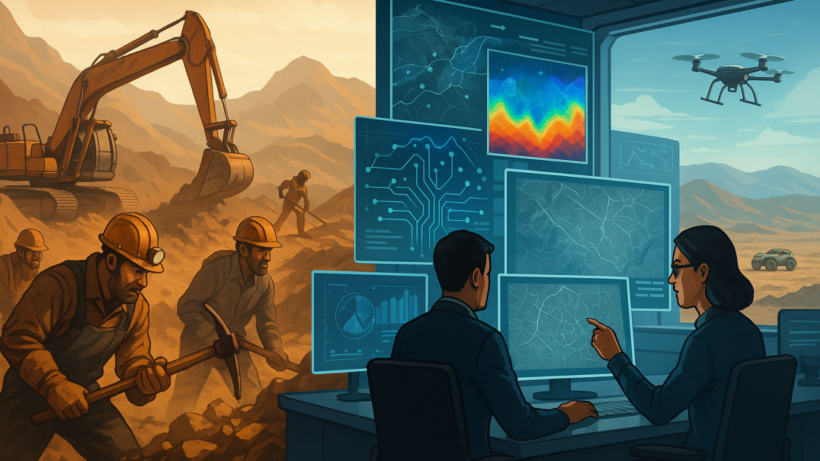Battery supply chains start long before cathodes, cell factories, or pack integration. They begin with exploration by drilling through rock in remote terrain, working with fragmented historical data, and operating in one of the most uncertain parts of the entire process, usually in remote and/or dangerous terrain.
It’s a domain shaped by complex geological, environmental, and geographic constraints that often resist simple optimization.
Still, AI is starting to change how we approach mineral discovery. Slowly, and unevenly, but the change is happening.
What’s Working: Early Successes in AI-Driven Discovery
AI is already making an impact in mineral exploration, particularly in how we identify, rank, and prioritize potential deposits.
Machine learning models are being used to integrate satellite imagery, geophysical data, drill logs, and historical surveys to predict likely ore body locations. Companies like KoBold Metals have shown how data-driven approaches can surface overlooked exploration targets, improving both speed and confidence.
Other tools are helping geologists reduce uncertainty by identifying patterns that might take years to detect manually, accelerating the time it takes to move from a region of interest to a viable drill target.
On the operational side, AI is increasingly embedded in autonomous haulage and drilling systems. Predictive maintenance models for trucks, shovels, and processing plants are helping reduce downtime and extend equipment life, especially at large mining sites that can produce a wealth of data.
These applications may not be flashy, but they’re saving time, cutting costs, and reducing the carbon footprint of early-stage exploration.
What’s Still Missing: Gaps That Limit Broader Impact
Despite real momentum, most AI applications in mineral exploration remain narrow in scope, and highly dependent on data quality and domain context.
Many geological datasets are fragmented, poorly labeled, or locked in proprietary silos. Without standardized formats and consistent field validation, even the best models struggle to generalize beyond a specific region or deposit type.
There’s also a fundamental issue of trust. In high-stakes decisions like where to drill, or whether to greenlight a $100M+ early-stage project, few geologists or investors are ready to rely on black-box predictions, especially when the models can’t explain their logic in familiar geological terms.
Equally important is what’s missing from the models themselves, such as permitting timelines, community risk factors, water access, and ecological constraints are rarely incorporated into exploration models, even though they often have an outweighing effect on project viability.
Until AI tools evolve to account for these physical, social, and regulatory constraints, not just geological ones, their role will remain limited to decision support rather than strategy-setting.
What’s Next: Toward Smarter, Cleaner Discovery
Looking ahead, the opportunity for AI in resource discovery lies not just in geological prediction, but in integrated decision-making, where exploration strategy reflects not only ore potential but also environmental impact, permitting risk, and long-term sustainability.
For example, AI could help assess which regions are best suited for newer extraction methods like Direct Lithium Extraction (DLE), where success depends not just on lithium concentration, but also on brine chemistry, energy inputs, and water use. Beyond site exploration and selection, AI could also play a role in predicting which specific DLE process flows or technology packages are most compatible with a given resource. These systems are complex but can be modeled , and aligning geological data with the right extraction approach early on could prevent costly mismatches later.
We may also see early-stage platforms that combine satellite and regulatory data to assess permitting complexity or identify areas where proactive community engagement will be especially critical, particularly as critical minerals development shifts into more populated or environmentally sensitive regions.
Ultimately, the next evolution of AI in mining won’t be about full automation. It’ll be about surfacing insight faster, reducing blind spots, and making early-stage decisions that are not just more efficient, but more sustainable. Over the long term, AI has the potential to reshape how we locate, evaluate, and steward critical mineral resources on a global scale, linking discovery more tightly with responsible development.
By: Dr. Nicholas Grundish

